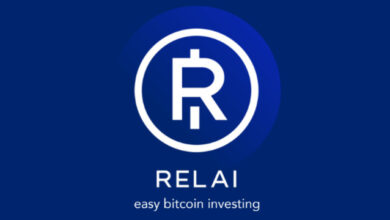Traditional Finance Embraces Public Blockchains for Tokenization

The world of finance is undergoing a shift. Traditional financial institutions (TradFi), once hesitant about blockchain technology, are now showing a growing interest in tokenizing assets on public blockchains. Tokenization is the process of converting a real-world asset, such as a security, bond, or even a piece of art, into a digital token on a blockchain. These tokens can then be easily traded and tracked on the blockchain network.
Here is a closer look at this trend with an analysis of the reasons behind it and its likely implications.
Why Private Blockchains Were Initially Favored
In the early days of blockchain adoption in TradFi, private blockchains were often seen as the preferred choice for asset tokenization. Private blockchains offer several advantages, including:
- Increased control– Institutions have more control over who can participate in the network.
- Enhanced security – Private blockchains are typically considered more secure than public blockchains because they are permissioned and have a limited number of participants.
- Greater regulatory compliance– Private blockchains can be tailored to meet specific regulatory requirements.
The Rise of Public Blockchains for Tokenization
However, the tide seems to be turning towards public blockchains for asset tokenization. This shift can be attributed to several factors:
- BlackRock’s lead – BlackRock, a major investment management firm, recently launched a $100 million tokenized fund, BUIDL, on the Ethereum public blockchain. This move has arguably legitimized public blockchains for TradFi institutions.
- Transparency and immutability– Public blockchains offer greater transparency and immutability of data compared to private blockchains. This can be vital for building trust with investors and regulators.
- Increased liquidity—Public blockchains generally have a wider user base and higher trading volume than private blockchains. This translates to greater liquidity for tokenized assets.
Examples of Public Blockchain Adoption
Celisa Morin, a former Grayscale executive and current head of Reed Smith’s legal department, believes that BlackRock’s move will likely influence other TradFi institutions. She argues that the likely benefits of public blockchains, such as transparency and liquidity, outweigh the drawbacks for many institutions.
Following BlackRock’s lead, other TradFi institutions are exploring public blockchains for tokenization:
- Franklin Templeton– Launched a tokenized money market fund on the Ethereum layer-2 network, Polygon, in October 2023.
- Tokenized Government Securities- Over $1 billion in U.S. Treasuries have been tokenized on public blockchains across various products.
Challenges and Considerations
While the shift towards public blockchains for tokenization is promising, there are still challenges to consider:
- Regulatory uncertainty remains a concern for TradFi institutions when operating on public blockchains.
- Public blockchains are inherently transparent, which may require TradFi institutions to adapt their KYC and AML (Anti-Money Laundering) processes.
- Due to their open nature, public blockchains are generally considered less secure than private blockchains. Institutions need to implement strong security measures to mitigate risks.
Final Thoughts
The increasing adoption of public blockchains by TradFi institutions for asset tokenization indicates a potential paradigm shift in the financial landscape. While challenges persist, the likely benefits of public blockchains in terms of transparency, liquidity, and efficiency are indisputable. As regulations evolve and security protocols improve, we can expect to see even broader adoption of public blockchains in the future of finance.
https://cointelegraph.com/news/tradfi-firms-to-choose-public-blockchains-for-rwa-tokenization
https://grafa.com/news/tradfi-companies-lean-towards-public-blockchains-for-token-issuance-207412





